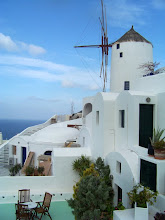
 Sergei Parajanov’s The Color of Pomegranates (1968) is one of the most beautiful and unique films I’ve ever seen. It tells about the life of 18th Century Armenian poet Savat Nova, which recalls Andrei Tarkovsky’s Andrey Rublyov, a film about the life of this 15th Century Russian icon painter. Both films bear a heavy religious and cultural theme, but in different poetic forms: Parajanov’s compact and abstract poem v.s. Tarkovsky’s long and slow-paced chaptered essay.
Sergei Parajanov’s The Color of Pomegranates (1968) is one of the most beautiful and unique films I’ve ever seen. It tells about the life of 18th Century Armenian poet Savat Nova, which recalls Andrei Tarkovsky’s Andrey Rublyov, a film about the life of this 15th Century Russian icon painter. Both films bear a heavy religious and cultural theme, but in different poetic forms: Parajanov’s compact and abstract poem v.s. Tarkovsky’s long and slow-paced chaptered essay. The narrative of The Color of Pomegranates is highly symbolic, metaphorical, fragmentary and surreal. Rather than acting in the conventional sense, the characters simply repeat slow moves against minimal background to represent an event or an inner expression, almost like a stage performance in an extremely abstract form.


 There is no dialogue, only text from the poet’s writings in combination with images. The colors and compositions of each frame possess an unspeakable beauty. It definitely requires a genius mind to envision such images. After learning that Parajanov was influenced by Pasolini, I can’t wait to explore Pasolini’s works.
There is no dialogue, only text from the poet’s writings in combination with images. The colors and compositions of each frame possess an unspeakable beauty. It definitely requires a genius mind to envision such images. After learning that Parajanov was influenced by Pasolini, I can’t wait to explore Pasolini’s works. 
2 comments:
颜色很漂亮~
I watched this film on the plane back from Salt Lake. It's an amazing amazing film! I doubt how many people in the world are capable of fully understanding all the symbols and representations in the film. Not me, that's for sure. Can't imagine how much knowledge it requires for a filmmaker to make a film like this.
renee
Post a Comment